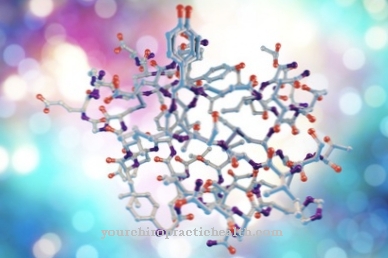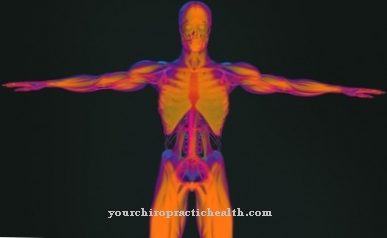In the defecation the rectum is emptied and indigestible components of the food are disposed of. The defecation is also called bowel movement designated.
What is Defecation?

Feces, also known as faeces, consist of indigestible food components such as fiber, undigested residues of fats and starch, connective tissue and muscle fibers and, for the most part, water. The feces also contain expelled intestinal cells, mucus and digestive enzymes. The faeces are colored by the dye Sterkobilin.
The feces are created in the intestines during digestion. It is mixed there and transported on until it is finally collected in the rectum. Stretch receptors in the intestinal wall signal when emptying is necessary. The need to go to a toilet then arises.
Normally, defecation can be controlled consciously by humans. If this is no longer the case, it is referred to as incontinence. Defecation disorders are called dyschezia.
Function & task
The amount of feces produced and excreted per day varies from person to person as well as from day to day. How much stool is passed depends in large part on diet. Amounts of 100 to 500 grams per day are considered normal. In the case of a diet rich in fiber, for example in the case of vegetarians, the amount of feces can still be above the upper limit of 500 grams. The frequency of defecation varies in healthy people between three times a day and three times a week. The consistency of the stool also varies between soft and hard.
Defecation begins in the large intestine or in parts of the upper digestive tract. When eating, stretch receptors in the mouth, esophagus and parts of the stomach are irritated. The excited receptors transmit the information about food intake to the large intestine. This then reacts with strong contractions. The resulting peristaltic, i.e. wave-like, movements of the intestinal muscles transport the contents of the large intestine towards the rectum. In this way the colon tries to make room for the announced food. This reaction is also known as the gastrocolic reflex.
The rectum is closed by the anus, the so-called anus. The feces that are passed on from the large intestine are first collected in the rectum. This increases the wall tension of the rectal wall. The stretch receptors in the wall of the rectum are then excited and send electrical signals to the brain via special nerve pathways, the visceral-sensitive afferents.
The sensory cortex is responsible for defecation. Now the need to defecate is stimulated for the first time. The filling of the rectum also leads to an expansion of the internal ani sphincter muscle. This internal anal sphincter cannot be controlled voluntarily and is intended to prevent involuntary stool excretion. If this muscle expands, it is perceived as an urge to defecate. The passage of stool is still prevented by the external anal sphincter. This can be controlled arbitrarily up to a certain filling level of the rectum.
During defecation, both sphincters relax and the puborectalis muscle, a muscle of the pelvic floor muscles, relaxes. The erectile tissue in the area of the anus (corpus cavernosum recti) swells and at the same time a reflex tension of the posterior large intestine occurs. This pushes the stool further towards the anus until it is finally excreted. Defecation can be assisted by the muscular abdominal press.
You can find your medication here
➔ Medication for constipation and intestinal problemsIllnesses & ailments
A common defecation disorder is constipation. Constipation is when defecation is difficult, less than three times a week, or incomplete. Around a quarter of the German population suffers from constipation. The risk of defecation disorders increases with age.
There are two forms of chronic constipation. In so-called slow-transit constipation, there is a transport disorder in the intestine. Those affected have almost no spontaneous bowel movements and suffer from a feeling of fullness. The stomach is badly distended. Younger women are particularly affected. The causes are not yet fully understood. Nerve disorders, medication, and sociological and psychological factors are discussed as causes.
The other form of constipation is called outlet obstruction or obstructive defecation syndrome. This is a defecation disorder of the rectum. This means that the patient may feel an urge to defecate, but the stool can only be emptied incompletely and in small portions. This defecation lock is accompanied by pain in the area of the rectum. In some cases, those affected have to assist in defecating by applying pressure to the perineum or vagina with their hands, or even manually clearing out the rectum. In addition to organic, sociological and psychological factors are also suspected to be triggers.
Defecation disorders can also be caused by disorders of the endocrine system, for example an underactive thyroid or diabetes mellitus. Neurological diseases such as multiple sclerosis or depression as well as metabolic diseases also have a negative impact on defecation.
The loss of control over stool excretion is known as fecal incontinence. This can have various causes. Changes in stool consistency, for example in the case of inflammatory bowel disease or diarrhea caused by infections, can cause (temporary) fecal incontinence.
Even if the rectum is relocated, i.e. an artificial anus, caused for example by a tumor, it can lead to an involuntary excretion of stool. Other possible causes are dementia, defects in the sphincter muscles, disorders in the pelvic floor or local inflammation of the anus.

















.jpg)







.jpg)


